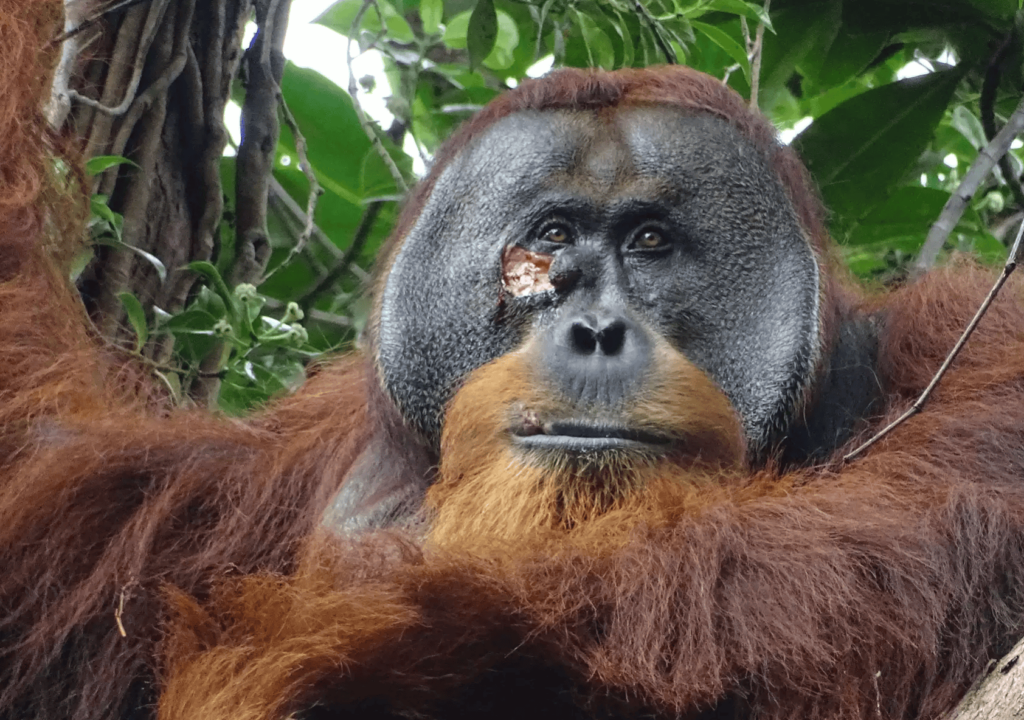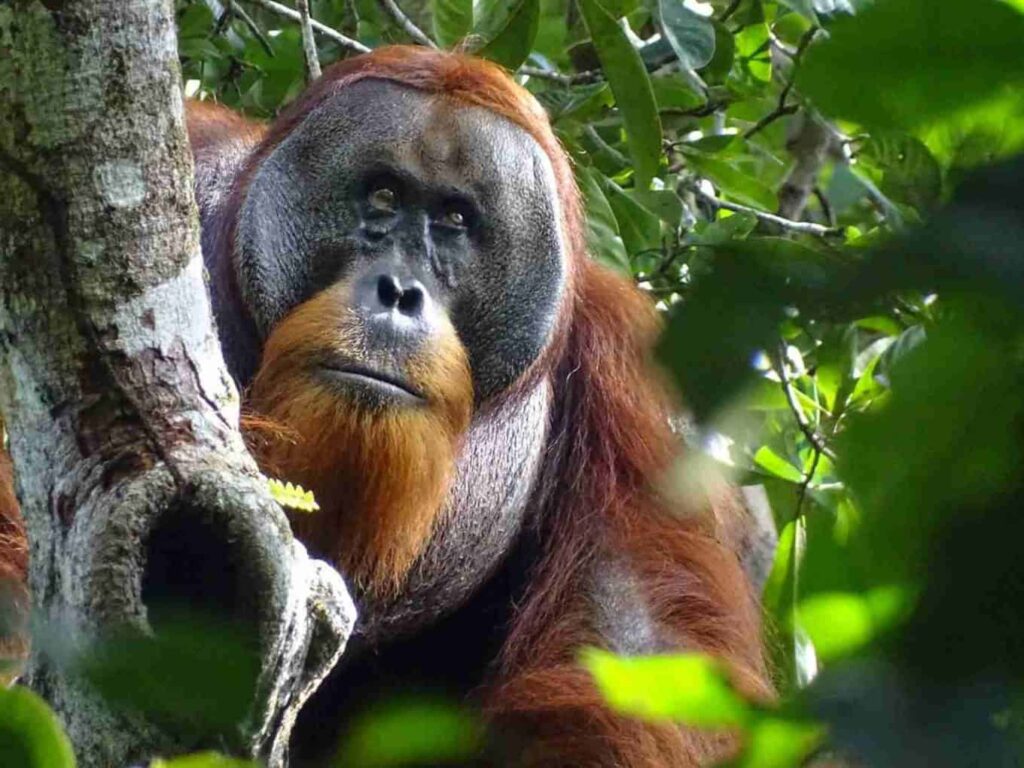An international research team has observed an orangutan treating a facial wound with healing leaves. A behaviour that has never before been recorded among animals. The researchers believe that the ability to use medicinal plants may come from a common ancestor of humans and great apes.
Rakus had an open wound on his face. Perhaps it came from a fight with another male. But regardless of how he got it – it didn’t look good.
Three days after the injury, however, the male did something unexpected: He began to pick carefully selected leaves of a special plant with healing properties , chewed on them, and then carefully placed them on the wound, as if it were a band-aid. After five days the wound had begun to heal, and after a month it was completely healed.
This observation is truly special. It is the first time ever that researchers have seen an orangutan, or any wild animal, treating a wound with medicinal plants.
“They are our closest relatives, and this again points to the similarities we share with them. We are more alike than we are different,” biologist Dr Isabella Laumer of the Max Planck Institute in Germany, who is also the lead author of the study, told the BBC.

A conscious act
Rakus is a wild Sumatran orangutan that lives in a protected rainforest area. He was continuously observed by biologists from both the Max Planck Institute and the Universitas Nasional in Indonesia. The results of their study have just been published in the scientific journal Scientific Reports.
The scientists watched in fascination as Rakus selected the plant and chewed on it until it formed a kind of salve, which he then smeared on the wound. The plant in question is a climbing plant with anti-inflammatory and pain-relieving properties. It is often used in traditional medicine.
The researchers believe that Rakus was aware that he was using medicine.
“Raku’s behaviour seemed to be completely intentional as he treated his wound with the herbal salve. The behavior was repeated several times, not only with the plant salve, but also later with more solid plant material, until the wound was completely covered. The whole process took a long time,” explains Isabelle Laumer to Science Daily.
The researchers also noticed that Rakus was resting much more than usual during this time, suggesting that he was trying to recover from his injury.

Common distant ancestor
It is not the first time great apes have shown that they can self-medicate. For example, they may eat certain specific plants that help heal parasitic infections, or rub plant material on their skin to treat sore muscles. Nevertheless, what has now been seen is completely unique – an orangutan treating a wound.
According to the researchers, this behaviour shows another thing that we humans have in common with great apes. They point out that the ability to treat wounds with plant medicine may come from a distant ancestor shared by humans and great apes. They will now observe more orangutans to learn more if they have the same behaviour as Rakus.
Make a difference – adopt your own orangutan!